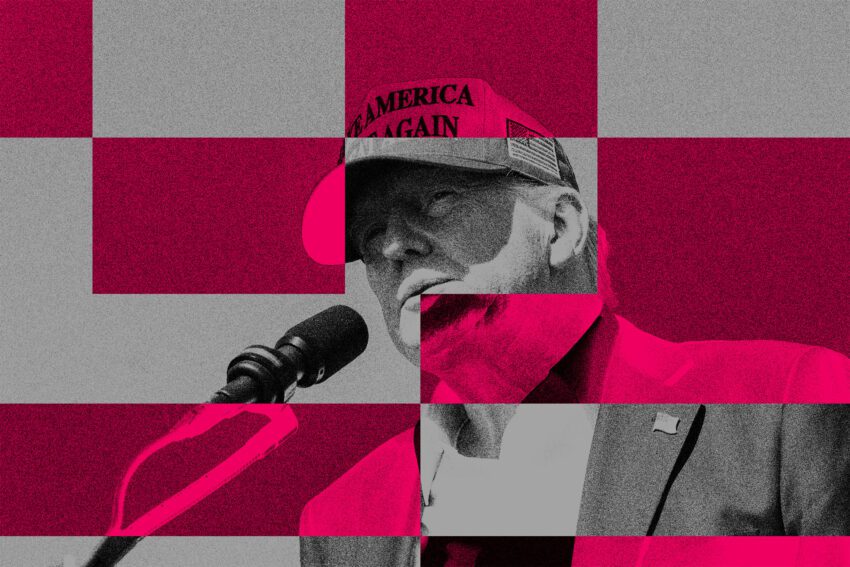
trump admin adds banner attacking radical left The Trump administration has implemented a series of banners across federal websites that attribute blame for the government shutdown to Democrats, while also promoting President Donald Trump’s stance on the issue.
trump admin adds banner attacking radical left
Background on the Government Shutdown
The government shutdown that began on Wednesday morning stemmed from a failure by Congress to reach an agreement on a funding bill. This impasse has been particularly contentious, primarily revolving around the extension of subsidies for the Affordable Care Act (ACA). The ongoing debate has highlighted deep partisan divisions, with Republicans and Democrats unable to find common ground on key issues. The shutdown has significant implications for federal operations, affecting everything from national parks to government services, and has left many federal employees uncertain about their pay and job security.
Political Context
The political landscape surrounding the shutdown is fraught with tension. House Speaker Mike Johnson (R-LA) has publicly blamed Democrats for the impasse, stating on social media platform X that they “voted” to close the government. This rhetoric is part of a broader strategy by the Republican Party to frame the narrative around the shutdown, positioning themselves as defenders of government functionality against what they characterize as “reckless spending” and “obstructionism” by Democrats.
Federal Websites Displaying Political Messaging
In a move that has drawn considerable attention, the Trump administration has adorned various federal websites with banners that explicitly blame Democrats for the shutdown. One notable example is the banner on the US Department of Agriculture’s website, which states, “The Radical Left Democrats shut down the government.” This message is accompanied by a statement asserting that “President Trump has made it clear he wants to keep the government open and support those who feed, fuel, and clothe the American people.”
Such messaging is not isolated to the Department of Agriculture. The Department of the Treasury has also displayed a banner that echoes similar sentiments, accusing Democrats of shutting down the government “in the name of reckless spending and obstructionism.” The White House website has taken this a step further by including a countdown timer that tracks the duration of the shutdown, further emphasizing the administration’s narrative that Democrats are responsible for the current situation.
Implications of Political Messaging
The use of federal websites for political messaging raises questions about the appropriateness of such actions. Critics argue that these banners politicize government functions and blur the lines between public service and political campaigning. The implications of this strategy could be far-reaching, potentially undermining public trust in federal institutions. When government websites, which are typically viewed as neutral resources, become platforms for partisan messaging, it can create confusion and erode the credibility of the information provided.
Responses from Federal Agencies
Interestingly, not all federal agencies have adopted this approach. Websites for the Department of State, the Department of Education, and the Federal Communications Commission have opted for a more neutral stance, displaying a simple message indicating that the sites will not be updated due to the government shutdown. This divergence in messaging among federal agencies highlights the varying degrees of political engagement within the government and raises questions about the consistency of the administration’s communication strategy.
Stakeholder Reactions
The reactions to the banners have been mixed, with some praising the administration for taking a firm stance against what they perceive as Democratic obstructionism, while others have criticized it as an inappropriate use of government resources. Supporters of the administration argue that the messaging serves to inform the public about the reasons behind the shutdown and to hold Democrats accountable for their role in the budgetary stalemate.
On the other hand, opponents of the banners contend that using federal websites for political purposes undermines the integrity of government communications. They argue that such actions could set a dangerous precedent, where future administrations might feel empowered to use government platforms for their political agendas, further politicizing public service.
The Broader Political Landscape
The shutdown and the accompanying political messaging are occurring against a backdrop of broader political dynamics in the United States. The ongoing debate over healthcare, particularly the Affordable Care Act, remains a contentious issue that has divided lawmakers for years. The Republican Party has consistently sought to dismantle or alter the ACA, while Democrats have fought to preserve and expand it. This ideological divide is at the heart of the current funding impasse.
Future Implications
The implications of the shutdown extend beyond immediate government operations. If the deadlock continues, it could lead to significant disruptions in federal services, affecting millions of Americans who rely on government programs. Additionally, prolonged uncertainty could impact the economy, as government spending plays a crucial role in economic stability. The longer the shutdown lasts, the more pronounced these effects will become, potentially leading to public discontent and political repercussions for both parties.
Conclusion
The Trump administration’s decision to use federal websites for political messaging during the government shutdown represents a significant shift in how government communications are conducted. While the administration seeks to frame the narrative around the shutdown in a way that favors its political agenda, the long-term consequences of such actions remain to be seen. As the shutdown continues, the public will be watching closely to see how both parties navigate this complex political landscape and whether they can ultimately reach a resolution that restores government operations.
Source: Original report
Was this helpful?
Last Modified: October 2, 2025 at 3:37 am
0 views















